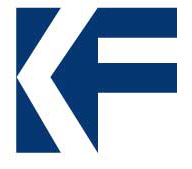Category Archive: News
Spotlight on Mark S. Luckie, Manager of Journalism and News for Twitter
October 1, 2012
We caught up with Mark S. Luckie at the Online News Association conference in San Francisco and asked him our standard five questions. Mark just signed on as Twitter’s first Manager of Journalism and News and is busy putting out all kinds of tips, research and data to help journalists use Twitter to enhance their work. Here’s what he told us.
[youtube]http://www.youtube.com/watch?v=oN403vzLcjI[/youtube]
The future of journalism is bright because …”
September 28, 2012
It’s not hard to find people talking about what’s wrong with journalism these days.
But that’s not what we’re focused on here. One thing we believe is that this is a potential golden age of journalism. In all the changes happening to the news industry, we see opportunities. Opportunities for entrepreneurs, for young journalists and for veteran ones. Opportunities to use new tools and old knowledge to create great journalism for the 21st century.
In that vein, we are asking journalism innovators (we call them journovators) to complete this sentence: The future of journalism is bright because __________
We’ll collect their answers here in a running file. Check in when you need a moment of inspiration.
The future of journalism is bright because __________
- “We have the ability to use a lot of new tools to tell narratives.”
– Laura Norton Amico, Homicide Watch D.C. - “We still attract an amazing array of creative people, and people still want to know what’s happening in their communities and the world.
–Steve Buttry, Digital Transformation Editor for Digital First Media and Journal Register Company. - “There’s so many ways to find people to read your stories and to consume all the various products that you’re putting out. It’s a really exciting time to be working and to be publishing, and there’s just so many things that you can do that were never possible before with stories. Pretty much, as big as you can dream, that’s what you can produce. And that’s pretty cool.”
–Jake Naughton, multimedia projects coordinator for The Pulitzer Center. - “The future of journalism is bright because of journalists. Journlists are really smart and really creative thinkers, and we really have evolved with the industry. Whatever happens in journalism is because of the people who power it.”
– Mark S. Luckie, Manager of Journalism and News for Twitter. - “People have a connection to their virtual selves, and everybody is gaming, and gaming’s a great environment to make money, and if we start taking that environment to buiold news storuies, we’re gonna get rich again.”
– Nonny de la Pena, Immersive Journalist.
Knight Foundation announces News Challenge winners
September 20, 2012
The second round of winners in the Knight Foundation’s News Challenge were announced on Thursday at ONA, and each of the winners are potentially exciting innovations in the news and journalism space. This challenge revolved around data.
The winners are:
• Local Data, which is a set of tools that allow users to easily collect and organize data about their local communities.
• OpenStreet Map, a community mapping project, received a grant to build a set of tools that will allow more people to add information to maps.
• Census.IRE.org, which helps journalists more easily navigate the always challenging world of US Census data. The Knight Foundation award will allow the group to expand its work into other data sets.
• PopUpArchive, which allows users to better organize multimedia content online, making it searchable and sharable.
• Open Elections, which will create a standardized set of election results for federal and statewide elections in the United States.
• Safecast Radiation & Air Quality, which is striving to create a real-time map of the air quality throughout the United States.
We’re looking forward to learning more about all of these projects and perhaps interviewing them for the site.
For more information on all the projects, visit the Idea Lab.
Journovator spotlight: Jake Naughton
September 17, 2012
Jake Naughton, the multimedia projects coordinator for The Pulitzer Center, spoke with Brian Moritz on Sept. 13 about his work creating digital journalism books.
[youtube]http://youtu.be/-ieEkbbw6Ds[/youtube]
Naughton discussed how The Pulitzer Center is creating books of original reporting that can be read on an iPad using the iBooks Author software. We talked about how these books can become multimedia projects and how they can help news organizations find new audiences.
The video runs about 20 minutes.
For more info on these books, visit The Pulitzer Center .
Journovator spotlight: Steve Buttry
September 17, 2012
Steve Buttry, an experienced digital journalist, joined Dan Pacheco’s “Creating the Next News Start-Up” class on Sept. 11 via Google+ Hangout.
[youtube]http://www.youtube.com/watch?v=EP2vxLRcuCM&feature=plcp[/youtube]
Steve, who works as Digital Transformation Editor for Digital First Media and Journal Register Company, spoke with the class about the changes going on within the newspaper industry as the print-to-online shift continues. He discussed his work online and in print and what the future holds for journalism.
The video runs about an hour and 20 minutes.
For more of Steve’s thoughts, visit his blog.
Journovation spotlight: Homicide Watch D.C.
September 17, 2012
There are at least two types of journalism innovations we’re interested in studying. There are the technical innovations that are changing the way news is gathered, the way news is delivered and the way news is consumed. And there are also conceptual innovations that are changing the way we as journalists view what is “the news.”
One site that is demonstrating both these types of innovations is Homicide Watch D.C.
Homicide Watch DC, which is run by Laura Amico and Chris Amico, covers every murder in Washington, D.C. The site covers every case, every step of the way, from murder to adjudication.
The site recently completed a successful Kickstarter campaign, raising more than $40,000 in a month. Because Laura Amico is on fellowship this academic year at Harvard (where she’s a Nieman-Berkman fellow), the site would have gone dark if they hadn’t raised enough money to pay for reporters to run the site during this year.
“Nobody wanted the site to go down,” Laura Amico said in a Google+ Hangout on Sept. 17. “No one in the community wanted it to go down. So we decided to turn it into a student reporting lab.”
The money raised will allow the Amico’s to hire at least five student interns to run the site this year. The campaign also raised the site’s profile, with David Carr writing about it in The New York Times and Clay Shirky writing an impassioned call for funding. “Homicide Watch matters because they are more than just thorough, they’re innovative,” Shirky wrote.
In several ways, Homicide Watch DC is re-conceptualizing what local journalism looks like in the digital world.
One of the most obvious is in its focus. Homicide Watch DC is intensely local and intensely focused. It works under the banner: “Mark every death. Remember every victim. Follow every case.” It’s a radically simple notion – the Amicos cover every murder in Washington D.C., every step of the way.
The approach was born out of Amico’s experience as a newspaper crime reporter and her own curiosity when she moved to Washington D.C. in 2009.
“I didn’t understand how the individual cases fit into a bigger narrative,” she said. “I didn’t know which ones fit in, and I thought I needed to get a handle on the 100s of cases. And that was a smart decision. It let us review the assumptions of which crimes are newsworthy.”
Those assumptions are built into the work routines of print and television journalists.
“I think TV media does some of the best crime coverage, especially here in DC,” Amico said. “But they’re looking for that good shot, that good scene. And if happened late at night and it’s cleaned up by morning, there’s no shot. For print, there are different requirements.”
For Homicide Watch, D.C., there are no requirements. There is no news judgement, no wondering if this is worthy a story or not. If it’s a homicide it’s covered. Same as every other one.
To do so brings in the technological innovation – a database that is the site’s engine. The database allows the Amicos to follow each case, to collect data on every murder in Washington and to publish that information as they receive it. This information, which is often gathered piecemeal as it comes in, goes into the database.
“As I’m reporting on a case, I can fill in the location, the age, whatever,” Amico said. “So when, say, it’s Monday morning, there were three murders of the weekend, is that a lot? Or if I want to go deeper – who was killed this year, or are there a lot of plea deals vs. verdicts, I can do all of that with our database.”
The technological aspect of the site highlights another innovative approach the Amico’s take to their site. The site isn’t built around stories in the way that newspapers are or traditional news organizations are. It’s built around the database. Stories are a part of that and come out of that. But the crux of the site is the information, not the story.
“I love to write, I became a journalist because I love to write, and when I look at some of the things on Homicide Watch, I think ‘This isn’t all great writing,'” Amico said. “It’s a lot more about the information and being a community resource than it is about great writing. Ideally, at some point, there ends up being a well-written story. But I don’t have to come back and write the 40-inch story the next day about it. At Homicide Watch, we can take the time we need to get there and to build narratives.”
That time also allows for one of Homicide Watch’s other conceptual innovations. It is built, in many ways, around the community it serves. Community members comment on stories, connect through email, social media and any other way you can imagine. The site shows that being a news organization is as much about being a community resource than it is about being a reporting center.
This comes through in how Amico deals with the victims’ families.
“When I worked as a traditional reporter, you’d go out to a crime scene and you were not allowed to come back without “The Quote,” she said. “The way we do things now, I don’t need that quote immediately. If their mother or brother would rather not say something to me right now, if they’re not ready to talk, I don’t want to force them to. Instead, I’ll give them my card and tell them I’m doing a story for tomorrow, if you would like to say something, you can leave a comment on the story or here’s how to get in touch with me later, here’s my e-mail, my phone number. If you’d like to get in touch with me later, that’s fine.
It really puts the power in their hands.”



